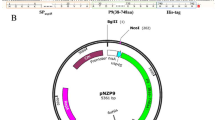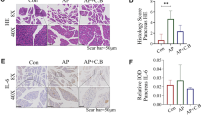Abstract
The phorbol ester, TPA, transiently increases the transepithelial permeability across the gastrointestinal epithelium formed by IEC-18. There was a significant decrease in transepithelial resistance (RT) between 0 and 1.5 hr, accompanied by increased flux of polyethylene glycol (4000 MW), suggesting that the increase was across the tight junction. By 2 hr, the decrease in RT reversed and maintained control level. The transepithelial permeability increase was prevented by coincubation with the protein kinase C (PKC) inhibitor bisindolylmaleimide. There was a rapid (within 15 min) translocation of PKC-α from the cytosolic to the “membrane-associated” compartment, followed by a down-regulation that was detectable within 60 min of TPA treatment. The down-regulation of PKC-α from the membrane was prevented by either calpain inhibitor I or MG-132 and resulted in a sustained permeability increase. The permeability changes were not accompanied by significant effects on the amount or localization of the tight junctional proteins, occludin and ZO-1. However, occludin did show a reversible increase in phosphorylation with TPA treatment. Together these data support a role for PKC-α-mediated regulation of barrier permeability in an in vitro model of small intestinal epithelium, perhaps through modulation of the phosphorylation state of the tight junctional protein, occludin.
Similar content being viewed by others
References
Mullin JM, O'Brien TG: Effects of tumor promoters on LLCPK1 renal epithelial tight junctions and transepithelial flux. Am J Physiol 251:C597–C602, 1986
Mullin JM, McGinn MT: Effects of diacylglycerols on LLCPK1 renal epithelia: similarity to phorbol ester tumor promoters. J Cell Physiol 221:359–364, 1988
Mullin JM, Marano CW, Laughlin KV, Nuciglio M, Stevenson BR, Peralta Soler A: Different size limitations for increased transepithelial paracellular solute flux across phorbol ester and tumor necrosis factor-treated epithelial cell sheets.J Cell Physiol 171:226–233, 1997
Mullin JM, Mc Ginn MT: The phorbol ester, TPA, increases transepithelial epidermal growth factor flux. FEBS Lett 221:359–364, 1987
Mullin JM, Ginanni N, Laughlin KV: Protein kinase C activation increases transepithelial transport of biologically active insulin. Cancer Res 58:1641–1645, 1998
Mullin JM, Kampherstein JA, Laughlin KV, Saladik DT, Peralta Soler A: Transepithelial paracellular leakiness induced by chronic phorbol ester exposure correlates with polyp-like foci and redistribution of protein kinase C-a. Carcinogenesis 18:2339–2345, 1997
Mullin JM, Peralta Soler A, Laughlin KV, Kampherstein JA, Russo LM, Saladik DT, George K, Shurina RD, O'Brien TG: Chronic exposure of LLC-PK1 epithelia to the phorbol ester TPA produces polyp-like foci with leaky tight junctions and altered protein kinase C-a expression and localization. Exp Cell Res 227:12–22, 1996
Clarke H, Ginanni N, Laughlin KV, Smith JB, Pettit GR, Mullin JM: The transient increase of tight junction permeability induced by bryostatin I correlates with rapid downregulation of protein kinase C-a.Exp. Cell Res 261:239–249, 2000
Clarke H, Soler AP, Mullin JM: Protein kinase C activation leads to dephosphorylation of occludin and tight junction permeability increase in LLC-PK1 epithelial cell sheets. J Cell Sci 113:3187–3196,2000
Quaroni A, Wands J, Trelstad RL, Isselbacher KJ: Epithelioid cell cultures from rat small intestine: Characterization by morphologic and immunologic criteria.J Cell Biol80:248–265, 1979
Ma TY, Hollander D, Bhalla D, Nguyen H, Krugliak R: IEC-18, a nontransformed small intestinal cell line for studying epithelial permeability. J Lab Clin Med 120:329–334, 1979
Bradford M: A rapid and sensitive method for the quantitation of microgram quantities of protein utilizing the principle of protein-dye binding. Anal Biochem 72:248–254, 1976
Peralta Soler A, Mullin JM, Knudsen K, Marano CW: Tissue remodeling during tumor necrosis factor-induced apoptosis in LLC-PK1 renal epithelial cells.Am J Physiol270:F869–F879, 1996
Marano CW, Lewis SA, Garulacan LA, Peralta Soler A, Mullin JM: Tumor necrosis factor-a increases sodium and chloride conductance across the tight junction of CACO-2 BBE, a human intestinal epithelial cell line.J Membr Biol161:263–274, 1998
Balda MS, Flores-Maldonado C, Cereijido M, Matter K: Multiple domains of occludin are involved in the regulation of paracellular permeability.J Cell Biochem78:85–96, 2000
Farshori P, Kachar B: Redistribution and phosphorylation of occludin during opening and resealing of tight junctions in cultured epithelial cells.J Membr Biol 170:147–156, 1999
Youkaim A, Ahdieh M: Interferon-gamma decreases barrier function in T84 cells by reducing ZO-1 levels and disrupting apical actin.Am J Physiol 276:G1279–G1288, 1999
Ojakian GK: Tumor promoter-induced changes in the permeability of epithelial tight junctions.Cell23:95–105, 1981
Stenson WF, Easom RA, Riehl TE, Turk J: Regulation of paracellular permeability in CACO-2 cell monolayers by protein kinase C. Am J Physiol265:G955–G962, 1993
Hecht, G, Robinson B, Koutsouris A: Reversible disassembly of an intestinal epithelial monolayer by prolonged exposure to phorbol ester.Am J Physiol 266:G214–G221, 1994
Janecki A, Jakubowiak A, Steinberger A: Effects of cyclic AMP and phorbol ester on transepithelial electrical resistance of sertoli cell monolayers in two-compartment culture.Mol Cell Endocrinol 82:61–69,1991
Nilsson M, Ericson LE: Effects of epidermal growth factor and phorbol ester on thyroid epithelial integrity.Exp Cell Res 219:626–689, 1995
Watsky MA, Guan ZW: Phorbol ester modulation of rabbit corneal endothelial permeability.Invest Ophthalmol Vis Sci 38:2649–2654, 1997
Lum H, Malik AB: Regulation of endothelial barrier function. Am J Physiol 267:L223–L241,1994
Rosson D, O'Brien TG, Kampherstein JA, Szallasi Z, Bogi K, Blumberg P, Mullin JM: PKC-alpha activity modulates transepithelial permeability and cell junctions in the LLC-PK1 epithelial cell line.J Biol Chem 272:14950–14953, 1997
Simons RM, Laughlin KV, Kampherstein JA, Desai DC, Shurina RD, Mullin JM: Pentobarbital affects transepithelial electrophysiological parameters regulated by protein kinase C in rat distal colon. Dig Dis Sci 43:632–640, 1998
Donowitz M, Cheng HY, Sharp GWG: Effects of phorbol esters on sodium and chloride transport in rat colon. Am J Physiol 251:G509–G517, 1986
Civan MM, Rubenstein D, Mauro T, O'Brien TG: Effects of tumor promoters on sodium ion transport across frog skin. Am J Physiol 248:G457–G465, 1985
Berin MC, Buell MG: Phorbol myristate acetate ex vivo model of enhanced colonic epithelial permeability–reactive oxygen metabolite and protease independence.Dig Dis Sci 40:2268–2279, 1995
Perez M, Barber A, Ponz F: Modulation of intestinal paracellular permeability by intracellular mediators and cytoskeleton. Can J Physiol Pharmacol 75:287–292, 1997
Balda MS, Whitney JA, Flores C, Gonzalez S, Cereijido M, Matter K: Functional Dissociation of paracellular permeability and transepithelial electrical resistance and disruption of the apical- basolateral intramembrane diffusion barrier by expression of a mutant tight junction membrane protein. J Cell Biol 134:1031–1049, 1996
McCarthy KM, Skare IB, Stankewich MC, Furuse M, Tsukita S, Rogers RA, Lynch RD, Schneeberger EE: Occludin is a functional component of the tight junction. J Cell Sci 109:2287–2298, 1996
Hong DH, Huan J, Ou BR, Yeh, JY, Saido TC, Cheeke PR, Forsberg NE: Protein kinase C isoforms in muscle cells and their regulation by phorbol ester and calpain.Biochim Biophys Acta Mol Cell Res 1267:45–54, 1995
Lee HW, Smith L, Pettit GR, Smith JB: Bryostatin 1 and phorbol ester down-modulate protein kinase C-α and-ɛ via the ubiquitin/proteasome pathway in human fibroblasts.Mol Pharmacol 51:439–447, 1997
Kevil CG, Oshima T, Alexander B, Coe LL, Alexander JS: H2O2-mediated permeability: role of MAPK and occludin. Am J Physiol 279:C21–C30, 2000
Antonetti DA, Barber, AJ, Hollinger LA, Wolpert EB, Gardner TW: Vascular endothelial growth factor induces rapid phosphorylation of tight junction proteins occludin and zonula occluden 1. J Biol Chem 274:23463–23467, 1999
Hirase T, Kawashima S, Wong EYM, Ueyama, T, Rikitake Y, Tsuukita S, Yokoyama M, Staddon JM: Regulation of tight junction permeability and occludin phosphorylation by RhoAp160ROCK-dependent and-independent mechanisms. J Biol Chem (in press)
Author information
Authors and Affiliations
Rights and permissions
About this article
Cite this article
Marano, C., Garulacan, L., Ginanni, N. et al. Phorbol Ester Treatment Increases Paracellular Permeability Across IEC-18 Gastrointestinal Epithelium In Vitro. Dig Dis Sci 46, 1490–1499 (2001). https://doi.org/10.1023/A:1010696005958
Issue Date:
DOI: https://doi.org/10.1023/A:1010696005958




